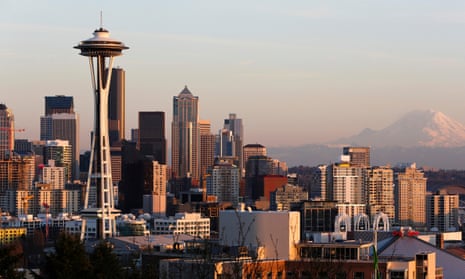For the last couple of weeks, a piece of apocalyptic journalism has been dominating the most read section of the New Yorker website, under the heading “The earthquake that will devastate Pacific Northwest”. It is by the excellent Kathryn Schulz, who, after garnering a huge and terrified response to her piece, was obliged to write a follow-up, calming readers’ fears and offering them some hints on how to survive.
There is a long tradition in journalism of whipping up the disaster-movie-type fear one gets from imagining the worst. In Britain we are accustomed to one newspaper or another (mainly one newspaper) speculating on the likelihood of the south-east disappearing as sea levels rise – “Terrifying new pictures reveal how Britain’s cities could be devastated by flood water” was the Daily Mail headline in 2011 – probably as a result of an illegal immigrant leaving the gate open.
The remarkable thing about the Schulz piece is the nature of the scientific predictions: that, within the next 50 years, there is a 30% chance of a catastrophic earthquake with a magnitude of between 8.0 and 8.6 hitting the Pacific north-west, and a one in 10 chance of an even worse quake striking the region in the same period.
The response from Seattle and the surrounding area to the piece, which cited projections of 13,000 dead, 27,000 injured and a million refugees, has been understandably freaked. “New Yorker scares the bejesus out of NW,” wrote the Seattle Post-Intelligencer. “A terrifying read,” wrote the Seattle Times. “Did the New Yorker’s earthquake article scare the crap out of you or what?” asked Seattle Curbed, a real estate website.
There are lots of things residents can do to improve their chances, wrote Schulz, most of them cheapish fixes involving bolting down bits of their house to the floor and removing heavy objects from high shelves. For the rest of us, a piece of concrete advice that suddenly made the whole thing seem real: if you are going on vacation to the Pacific north-west, the writer suggests, don’t stay inside the tsunami zone – a 700-mile stretch of coastline going up into Canada, although stretching as little as three miles inland. Tourists with no flashlight, no evacuation drill and no clue as to the direction of higher ground will almost certainly perish.
Seattle itself is not within the tsunami zone. But those odds would make me think twice about going up the city’s Space Needle. A response from the tourist board surely can’t be far off.
Dancing a Roomba with dad

The apocalypse can come in many forms – something I’ve been thinking about this week as Terminator Genisys plays in cinemas, and the second among my friends buys a Roomba (the robotic vacuum cleaner and first step towards cyborgs teleporting back from the future to destroy us).
From a cleaning point of view, it is fantastic. OK, it’s round, so it can’t get into corners. But it avoids objects with the delicacy of a flying saucer. When it detects a particularly dirty patch on the carpet (How? Magic!) it reverses and goes over it until clean. The Roomba is shallow enough to slide under beds, and wide enough to clean a rug in no time. Inevitably, there is a YouTube channel devoted to people putting their cats on it and watching them sail across the room.
From a psychological standpoint, what’s interesting about the Roomba is that when it is running, you don’t feel entirely alone in the house. One of the friends who has one keeps it droning around her apartment pretty much constantly, fixing a decades-old hygiene obsession and also – let’s face it – for company. My dad is in town this week. “Want to drop by and introduce him to the Roomba?” she said. And so it begins.

